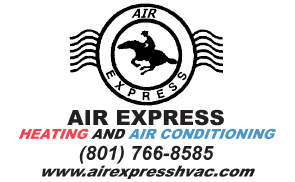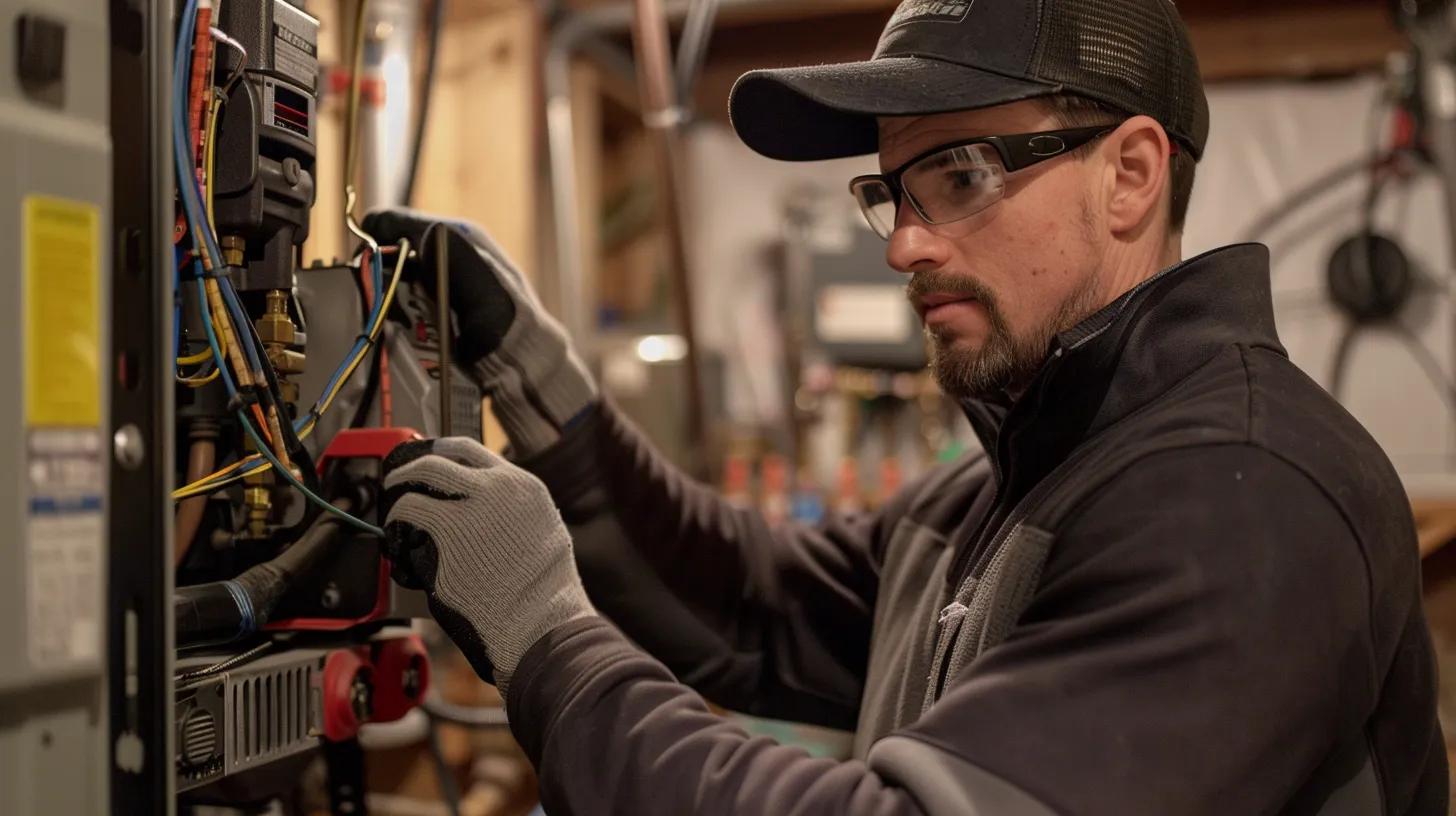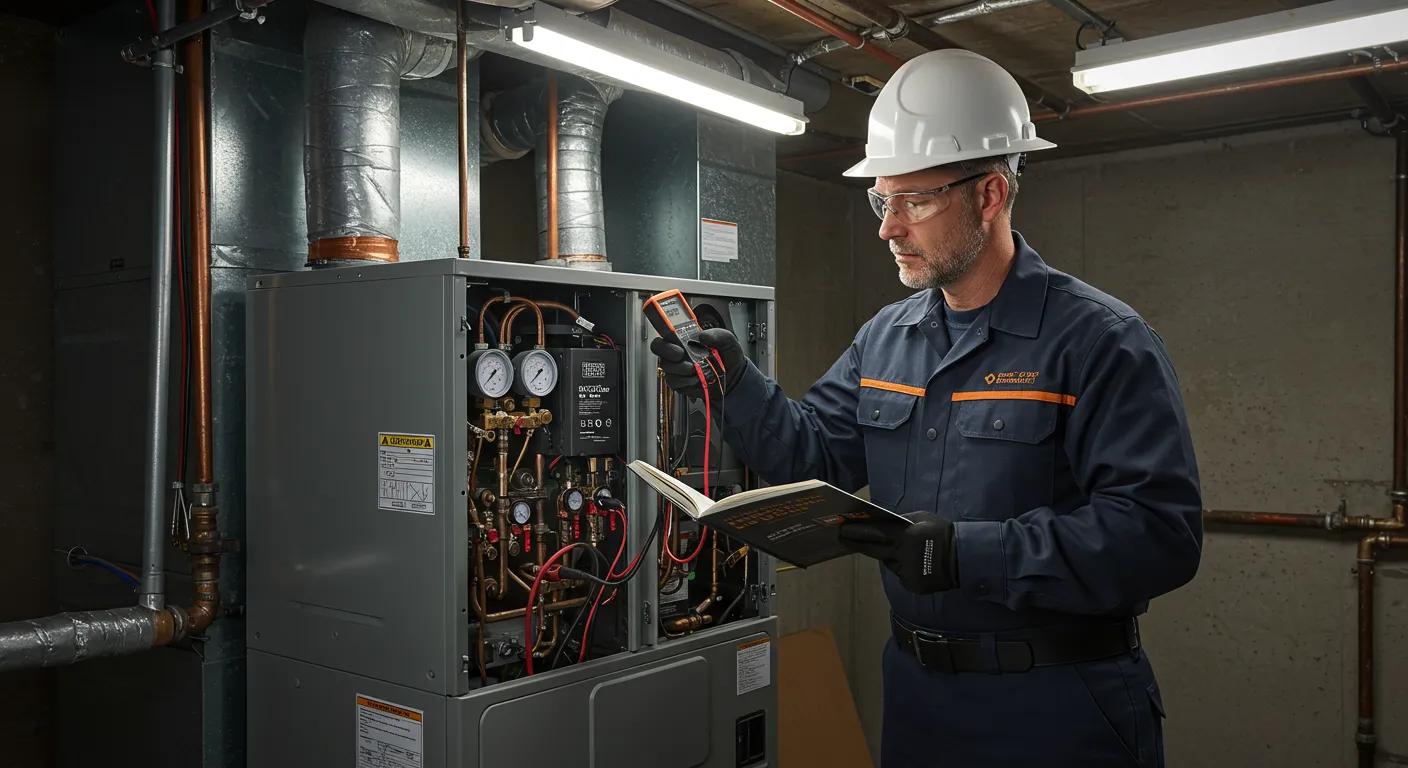Tips to Improve Heating System Energy Efficiency for Cost Savings and Comfort
Heating system energy efficiency means using less fuel or electricity to maintain comfortable indoor temperatures, which reduces monthly costs and improves comfort while lowering environmental impact. This article explains practical steps—both DIY and professional—to save energy in Lehi-area homes and businesses, covering maintenance, efficient equipment choices, controls, ductwork, insulation, and diagnostic audits. Readers will learn how routine tune-ups, proper filtration, smart thermostat settings, duct sealing, targeted insulation upgrades, and professional audits each contribute measurable savings and better comfort. The guide maps key actions to metrics like AFUE, HSPF, and R-values, and prioritizes interventions by payback so you can decide which upgrades to tackle first. Sections include regular maintenance strategies, comparisons of high-efficiency heating systems, smart thermostat benefits and setup, ductwork diagnostics and sealing, insulation priorities and R-value guidance, and the role of a home energy audit in sequencing improvements. Throughout, the article integrates practical local-service options and takeaway checklists so you can act on savings immediately.
How Can Regular Heating Maintenance Boost Energy Efficiency?
Regular heating maintenance is a routine set of inspections and adjustments that restore system performance by ensuring combustion efficiency, airflow, and control accuracy, which reduces runtime and fuel consumption. The mechanism is straightforward: cleaned components, correct calibration, and friction-free moving parts let the system deliver the same heat using less energy, producing lower bills and improved comfort. The tangible benefit is shorter run cycles and fewer emergency repairs, which together raise seasonal efficiency and system longevity. Below is a short checklist followed by practical steps homeowners can apply to preserve efficiency and detect problems early, and then we move into specific tune-up tasks homeowners should expect.
Why Are Heating Tune-Ups Essential for Saving Energy?
A professional heating tune-up inspects the burner or heat exchanger, verifies combustion, cleans heat-transfer surfaces, checks blower motor operation, and calibrates controls to restore design efficiency. These tasks reduce excess fuel use caused by dirty burners, clogged ports, or imbalanced airflow and often recover several percentage points of AFUE in older systems. A typical result is reduced cycle frequency and more even temperatures, which lowers furnace runtime and utility costs while reducing wear. Homeowners should schedule tune-ups annually before the heating season begins, and recognize signs like uneven heating, increased cycles, or strange odors as prompts to call a technician. Understanding these tune-up items helps you prioritize which services deliver the biggest energy return during a maintenance visit.
For homeowners and facility managers ready to book professional upkeep, Air Express Heating & Air Conditioning is a local family-owned and operated HVAC service company based in Lehi, UT, that offers heating installation, maintenance, repair, and replacement along with certified technicians committed to on-time service.
How Often Should You Change Your Furnace Filter for Optimal Efficiency?
Changing or inspecting your furnace filter is one of the highest-impact, lowest-cost maintenance actions because filtration directly affects airflow, heat transfer, and blower energy use. For most homes, a practical replacement cadence is every 1–3 months depending on occupancy, pets, and indoor air quality needs; higher-traffic homes and those with pets or allergies should change filters monthly. Using a filter rated appropriately (moderate MERV) balances particle capture with minimal airflow restriction so the furnace does not work harder than necessary. Simple DIY checks include holding the filter up to light—if you see little light, it’s time to replace—and recording replacement dates to avoid forgetting. Proper filter maintenance reduces system strain, helps preserve heat pump or furnace efficiency, and postpones larger repairs.
What Are the Best Energy Efficient Heating Solutions for Your Home or Business?
Energy-efficient heating solutions include high-efficiency furnaces, air-source and geothermal heat pumps, and selective radiant systems; each reduces energy use via different mechanisms such as higher AFUE, heat-transfer instead of direct generation, or targeted radiant delivery. The practical benefit is lower annual operating costs and, in many cases, improved comfort control that reduces wasted energy in under-used spaces. Choosing the right system depends on building type, climate considerations, and existing distribution systems, so the following comparison and table clarify efficiency metrics, typical installation costs, and expected annual savings to guide decision-making. After reviewing options and payback expectations, you’ll be in a stronger position to evaluate financing and installation choices.
| System | Efficiency Metric (typical) | Typical Installation Cost | Estimated Annual Savings |
|---|---|---|---|
| High-efficiency furnace | AFUE 90–98% | Moderate to High | Moderate (varies with fuel) |
| Air-source heat pump | HSPF 8–12 / COP variable | Moderate | High vs electric resistance |
| Geothermal heat pump | COP 3.0–5.0 | High upfront | Very high; long-term payback |
This comparison shows how performance metrics like AFUE, HSPF, and COP map to cost and operational savings, helping owners prioritize based on budget and timeline. The next subsection examines high-efficiency furnaces and when replacement makes sense.
How Do High-Efficiency Furnaces Reduce Heating Costs?
High-efficiency furnaces reduce heating costs by increasing AFUE—the share of fuel converted to usable heat—through improved heat exchangers, secondary heat recovery, and sealed combustion. The mechanism is greater capture of combustion heat and lower flue losses, so less fuel is required to meet the same thermostat setpoint versus older units with lower AFUE. For homeowners with a worn unit, replacing a low-AFUE furnace can yield measurable annual savings that justify investment when repair costs approach replacement. Consider lifecycle comparisons: if repairs exceed a sensible threshold and expected remaining lifespan is short, a modern high-AFUE model often represents the better long-term economic choice. Understanding AFUE percentages and replacement trade-offs simplifies decision-making around when to upgrade.
What Are the Benefits of Heat Pumps for Year-Round Energy Savings?
Heat pumps move heat rather than generate it, delivering energy savings by leveraging outdoor thermal energy and providing both heating and efficient cooling with one system, which improves year-round utility. The key metrics are HSPF for heating and SEER for cooling; modern cold-climate air-source models and geothermal systems extend efficiency into colder months. Compared with electric resistance heating, heat pumps often cut heating energy use substantially, and geothermal options provide the highest steady efficiency with longer payback but lower operating costs. In Lehi’s climate, contemporary heat pumps designed for lower temperatures can be an excellent choice for homeowners seeking comfort and efficiency combined.
After evaluating equipment options, many owners consider financing and professional installation to ensure optimal performance and warranty compliance.
For homeowners considering upgrades or financing and to get a tailored installation estimate, Air Express Heating & Air Conditioning offers consultation and installation options for high-efficiency furnaces and heat pumps while serving residential and light commercial clients in Lehi and surrounding areas.
How Do Smart Thermostats Improve Heating System Energy Efficiency?
Smart thermostats improve heating energy efficiency by learning occupants’ patterns, enabling precise setback schedules, and optimizing runtime through occupancy sensing and adaptive algorithms, which typically reduce heating use by 10–15%. The mechanism is control optimization: by reducing setpoints when spaces are unoccupied and avoiding unnecessary recovery cycles, smart controls lower total energy consumption without sacrificing comfort. The benefit is measurable monthly savings and better data for ongoing behavior adjustments, especially when combined with zoning or improved envelope performance. Below are key features, an action-oriented setup list, and a short professional-installation note to ensure compatibility and maximize savings.
- Scheduling and setbacks: Automates lower temperatures during absences to reduce run time.
- Adaptive learning: Learns patterns to optimize start/stop cycles for efficiency.
- Remote control and reports: Allows occupancy-based changes and provides usage insights.
These features collectively help owners reduce wasted heat and adopt behaviors that sustain savings; the next subsection explains features in more depth.
What Features Make Smart Thermostats Effective for Energy Savings?
Smart thermostats are effective because scheduling, geofencing, adaptive learning, and energy reports each target wasted runtime through behavioral and automatic control interventions. Scheduling and setback examples often yield immediate savings by lowering setpoints during sleep or absence; adaptive learning refines those patterns so the system reaches comfort precisely when needed. Geofencing and occupancy sensing reduce recovery cycles by adjusting temperatures only when people are present, while energy reports encourage sustained efficiency through actionable insights. Compatibility checks ensure that the thermostat can control single-stage or multi-stage systems and that wiring supports features like power stealing or C-wire requirements. Understanding these features lets you choose a model that matches your heating system and occupancy patterns.
How Can Professional Installation Maximize Smart Thermostat Benefits?
Professional installation ensures wiring compatibility, correct configuration for multi-stage systems, and verification of integration with existing HVAC controls, which prevents misconfigurations that reduce savings or trigger equipment faults. An installer will check the electrical interface, stage mapping, and sensor placement, then perform calibration and test schedules so the thermostat’s learning algorithms start from an accurate baseline. Proper setup is especially important for complex systems like heat pumps with emergency heat or commercial multi-zone installations where staging and call-for-heat logic are critical.
For those who prefer professional setup, Air Express Heating & Air Conditioning provides installation and configuration services with certified technicians to ensure systems operate correctly from day one.
Why Is Duct Sealing Important for Heating Energy Savings and Indoor Comfort?
Duct sealing reduces leakage in the distribution system so more conditioned air reaches living spaces, which directly reduces furnace runtime and improves indoor comfort; the mechanism is simple—less leakage means more delivered heat per cubic foot of air moved. The result is improved system efficiency, more even temperatures, and lower energy bills, particularly in homes where ducts run through unconditioned spaces. Below is an evidence-backed estimate of savings, a table with typical before/after metrics, and practical diagnostic signs to help you decide when to pursue professional sealing. After the performance numbers, we’ll cover actionable inspection steps homeowners can perform.
| Metric | Typical Before | Typical After | Estimated Annual Savings |
|---|---|---|---|
| Duct leakage rate | 10–30% of airflow | 1–5% of airflow | $100–$300+ depending on home |
| Delivered heat efficiency | Low | Improved by 20–30% | Significant runtime reduction |
| Comfort uniformity | Uneven rooms | More even | Fewer hot/cold spots |
Sealing ducts often yields substantial seasonal savings and rapid payback, especially where leaks exceed typical levels; the next subsection quantifies savings using a sample scenario.
How Much Energy Can You Save by Sealing and Insulating Ductwork?
Sealing and insulating ductwork can improve system delivery efficiency by roughly 20–30% in homes with moderate-to-high leakage, translating to measurable annual cost reductions depending on home size and fuel costs. For example, reducing leakage from 25% to 5% in a typical single-family home often lowers furnace runtime enough to save a couple hundred dollars per year, with payback periods commonly within a few years. Factors that affect savings include duct location (attic vs conditioned basement), insulation level, and existing HVAC efficiency; sealing combined with insulating ducts in unconditioned spaces produces the largest gains. A short case calculation helps homeowners estimate expected savings before scheduling work. When leaks are suspected, a professional diagnostic can confirm leakage and prioritize sealing actions for greatest impact.
What Are the Signs Your Ducts Need Professional Sealing?
Several common clues indicate ducts need professional attention: rooms that are consistently colder or warmer than others, visible dust blowing from registers, whistling or noticeable air loss at seams, and higher-than-expected heating bills despite normal thermostat settings. Simple DIY checks include running the system and feeling for airflow around joints in the attic or crawlspace, or temporarily blocking registers to detect pressure changes that suggest leaks. If multiple signs appear, a professional inspection with diagnostic tools will measure leakage and recommend targeted sealing and insulation measures. Early detection prevents energy waste and improves both comfort and indoor air quality in the long term. After inspecting ducts, homeowners should consider whether sealing alone or sealing plus insulation delivers the best payback.
For clarity on when duct sealing offers ROI and how sealing compares with other measures, the next section addresses insulation upgrades that often work together with duct improvements.
Conclusion
Improving heating system energy efficiency not only reduces monthly costs but also enhances indoor comfort and minimizes environmental impact. By implementing strategies such as regular maintenance, smart thermostat usage, and duct sealing, homeowners can achieve significant energy savings and a more comfortable living environment. For those ready to take the next step, consider consulting with a professional to explore tailored solutions for your heating needs. Discover how our expert services at Air Express Heating & Air Conditioning can help you maximize your energy efficiency today.






